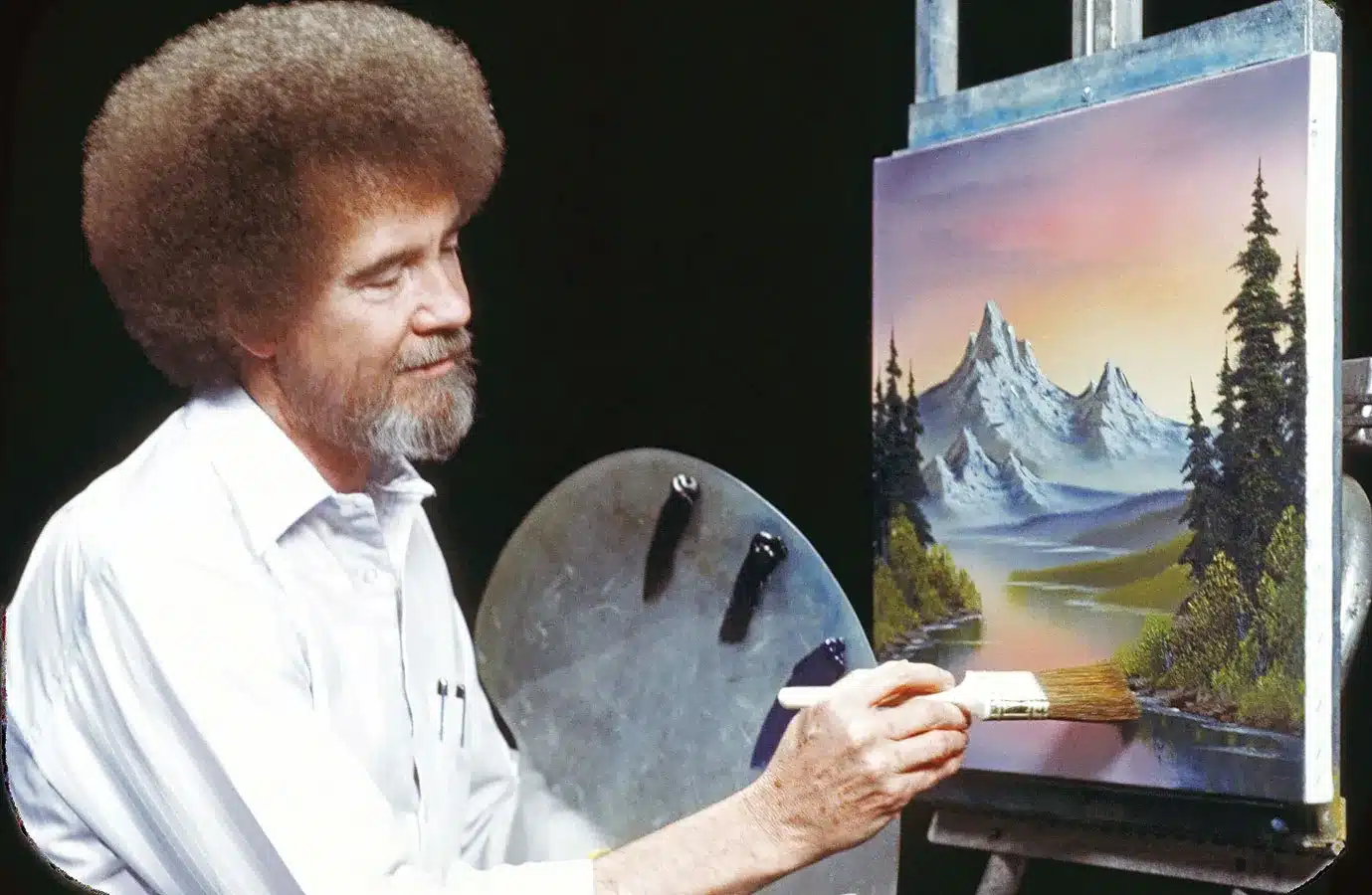A new generation may learn how to paint happy trees and create happy accidents thanks to a TV series that teaches the Bob Ross painting approach and features previously unseen works by the prolific artist.
Before dying of cancer in 1995, Ross had finished seven works for “The Joy of Painting” season 32.
Bob Ross’ Legacy Carries On With The New ‘The Joy Of Painting’ Series.
“He was so sick, but he was still working on his next series so he could keep going,” said Joan Kowalski, president of Bob Ross Inc. Her parents, Annette and Walt Kowalski, launched the company alongside Ross.
Those works had been held for nearly 30 years. Nicholas Hankins, a certified Bob Ross instructor, studied those seven paintings and painted them from scratch on camera in “The Joy of Painting with Nicholas Hankins: Bob Ross’ Unfinished Season,” which premiered this spring in some regions on American Public Television. Some episodes are available on the PBS website.
The ability to “take these paintings and do what Bob ultimately wanted done with them, (to) have them out in the world making people happy is gratifying,” Hankins said recently via Zoom. He teaches at the Bob Ross Art Workshop and Gallery, about 15 miles from Daytona Beach, Florida, and handles instructor certification. Hankins also incorporates six of his paintings into the new “Joy of Painting,” recorded and produced at WDSC-TV Daytona State College.

Bob Ross’ Legacy Carries On With The New ‘The Joy Of Painting’ Series.
“I think that Bob would be incredibly proud of how we’re doing this,” stated Kowalski. “There aren’t many situations that present us with the question of what we should do. Bob was extremely explicit about how he intended this whole thing to unfold in the future.”
Hankins is a familiar face among Ross enthusiasts. His educational films on the Bob Ross YouTube channel received upwards of 300,000 views before the television concept was even considered.
Kowalski is interested in the online reactions to Hankin’s videos. “People notice that Nick is not at all trying to be Bob, and he’s delivering naturally as himself and yet there’s still that same sort of feeling you get watching Bob.”
The pandemic sparked a boom of interest in Bob Ross as people stayed home and sought ways to pass the time. With so many distractions, it can feel like there need to be more hours in the day to unwind and rest. If viewers don’t want to learn how to paint, Hankins thinks his 30-minute “Joy of Painting” episodes will help them relax as the originals did.
“I hope I can carry that part of the legacy on,” he stated. “I want to create an environment in which people will come in, spend half an hour, and simply switch off the world. “We need it right now.”

Bob Ross’ Legacy Carries On With The New ‘The Joy Of Painting’ Series.
According to Kowalski, people used to tell Ross “all the time” that they would fall asleep during his programs, but he didn’t mind. “He said, ‘I love hearing that you’ve never watched a full episode of me.'”
Hankins recommends basic painting supplies such as oil colors, an easel, canvas, and brushes. “But if they’re just watching, all they need is a tall glass of iced tea. That was Bob’s thing,” he continued, “get some iced tea, kick back, and watch.”
SOURCE – (AP)









